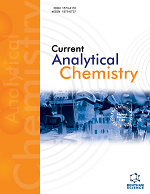
Full text loading...

Cocrystal engineering of Telmisartan (TEL, a poorly soluble antihypertensive agent) has been undertaken to improve its solubility for the last few years. However, apart from a few handpicked attempts, none of the attempts have been able to improve its solubility by more than 3-5 fold and augment its dissolution by more than 80%.
Addressing these shortcomings, herein, we have designed a novel Telmisartan-maleic acid (TM) cocrystal first by rational modelling with solvent-induced molecular mechanics (SIMM), ab initio based system optimization, descriptor analysis, and finally translating to cocrystals by wet grinding-gradient solvent evaporation method.
Modelling revealed that binary solvent compared to single solvent imparted critical dynamics to seeding the co-crystallite and its structural archipelago. From single solvent to binary solvent, hydrogen bonding to nucleophilic addition of the coformer/s to the central ring revealed a crucial role in assigning the system geometry. The molecular descriptor plot of the generated subsystems (optimized by HF-SCF/def2-SVP method) showed that telmisartan: maleic acid molar ratio <=1:2 under ionizable conditions bear optimum hydrophilicity/hydrophobicity balance. Tonto-guided energy calculation revealed O--H and H--H as the predominant interactions for the crystal packing.
In translational research, our designed TM cocrystal (molar ratio 1:1.5 to 1:2, binary solvent dynamics) exhibited solubility improvement by more than 9 fold in water and showed to release about 92.19% of drugs within 2h (120 min), which superseded the previous reports in this field so far.